16 Great Places to Retire in the South
One strategy for selecting your retirement destination: Follow the birds.


One strategy for selecting your retirement destination: Follow the birds. The southern states offer not only mild climates, but also low costs and robust economies—attractive qualities for any retiree. No wonder plenty of people already plan to head south for their retirements. According to a survey by Merrill Lynch and Age Wave, a research firm focused on the aging population, 37% of respondents say they plan to move to the South Atlantic (including North Carolina, South Carolina, Georgia and Florida), making it the most popular retirement region in the U.S. More specifically, Florida and South Carolina prove to be particularly popular with retirees, ranking second and fourth, respectively, among the top 10 states people moved to for retirement in 2018, according to United Van Lines' annual national movers study.
If you're ready to the heavy migration to the South for your own retirement, we suggest you consider the following spots. We highlighted one great retirement destination in each state, taking into account living costs, safety, median incomes and poverty rates for retirement-age residents, as well as residents' sense of well-being and the availability of recreational and health care facilities. These are our choices in the southern region of the U.S.
Disclaimer
The list is ordered alphabetically by state. See "How We Picked the Best Places to Retire" at the end of the list for details on our data sources and methodology.

Huntsville, Ala.
- City population: 190,501
- Share of population 65+: 15.2% (U.S.: 14.9%)
- Cost of living for retirees: 6.1% below the national average
- Average income for population 65+: $51,853 (U.S.: $56,453)
- Community score: 63.3 (U.S.: 61.9)
- State's tax rating for retirees: Tax Friendly
As one of the 10 Cheapest States Where You'll Want to Retire, the Heart of Dixie boasts many great spots for affordable living. And Huntsville, in northern Alabama, is one of the best. It offers all the low-cost, low-tax advantages as the rest of the state, but adds more generous incomes among retirement-age residents.
Home to NASA's Marshall Space Flight Center, the Redstone Arsenal and the Huntsville campus of the University of Alabama, the city offers a robust economy and a highly educated population. There are plenty of cultural attractions, from a sculpture trail to a symphony orchestra. Opportunities for outdoor recreation abound, as well: Hiking and biking paths around and throughout the city include the advanced slopes of Monte Sano Mountain (meaning "Mountain of Health" in Spanish), which has an elevation of 1,621 feet. Or you can enjoy more leisurely paths of the Huntsville Greenway system. And Alabama at-large offers many of Florida's popular retirement attractions&mdasah;warm weather, nice beaches and plenty of golf—all at a typically lower price.

Fayetteville, Ark.
- City population: 81,889
- Share of population 65+: 9.1%
- Cost of living for retirees: 13.8% below the national average
- Average income for population 65+: $85,436
- Community score: 66.3
- State's tax rating for retirees: Not Tax Friendly
The metro area of Fayetteville, which includes Springdale, Rogers and Bentonville, offers low costs but plenty of attractions. The surrounding Ozark Mountains afford residents outdoor recreation and natural wonders to enjoy while the downtown area, home to the University of Arkansas, provides restaurants, shops and a lively music and arts scene, including the Walton Arts Center.
Locals seem happy with what they have at their fingertips. Fayetteville ranks 11th for community well-being on the Gallup-Sharecare Well-Being Index with residents reporting high levels of liking where they live, feeling safe and having pride in their community.
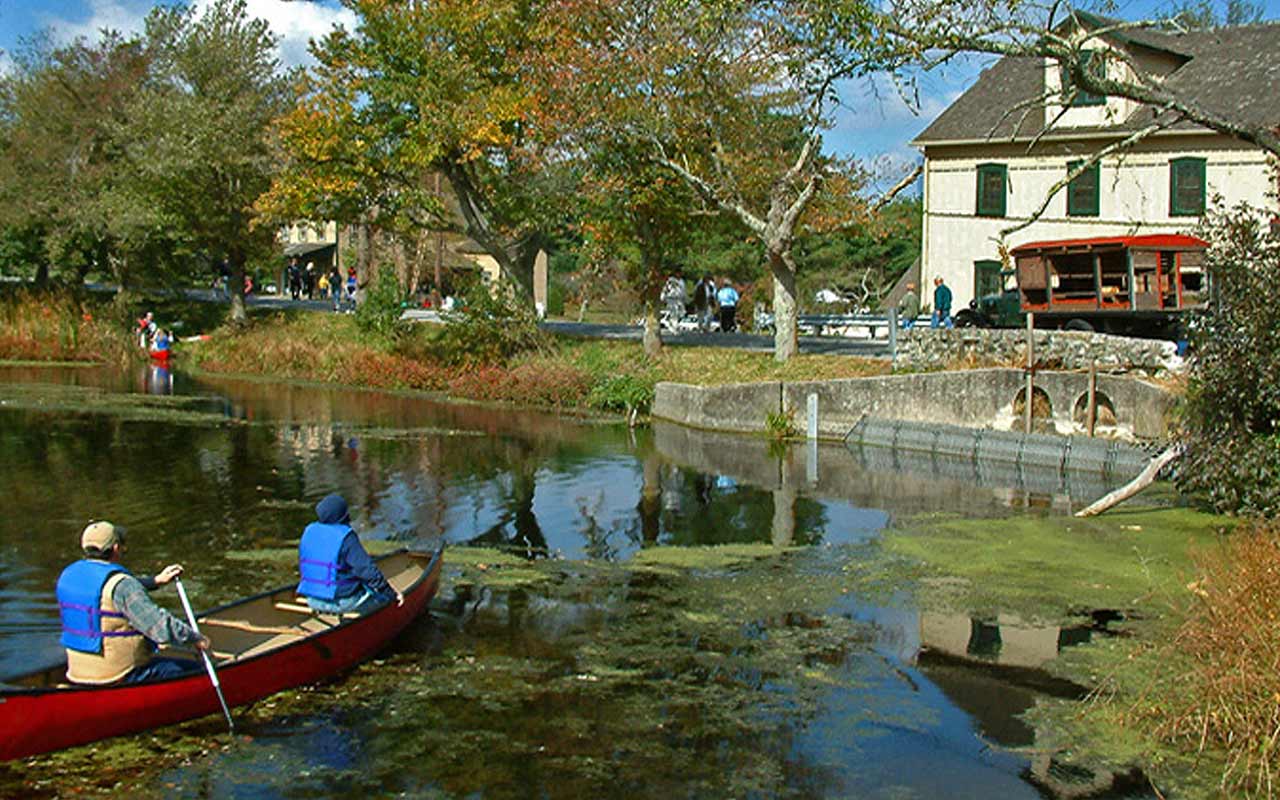
Milford, Del.
- City population: 10,654
- Share of population 65+: 19.7%
- Cost of living for retirees: n/a
- Average income for population 65+: n/a
- Community score: n/a
- State's tax rating for retirees: Tax Friendly
If you're thinking about heading to one of Delaware's popular beach towns for retirement, brace yourself for sticker shock. Better yet, consider instead the more affordable Milford, where overall living costs are about the same as the national average, according so Sperling's BestPlaces. By comparison, the cost of living in popular Bethany Beach, about 40 miles south of Milford and right on the coast, is a whopping 83.2% above the national average. Indeed, median home values in Milford are far lower than in Bethany Beach at $224,500 and $436,100, respectively, according to Zillow.
The small inland city is about 10 miles from Slaughter Beach, so you can still hit the shore with a 15-minute drive. And if you do want to visit the more popular Delaware beaches, it takes about 40 minutes to drive to Rehoboth or Dewey and another 10 to 20 minutes to Bethany. You can also enjoy some waterfront views in town along the Mispillion River. Downtown, there are numerous restaurants and boutiques, as well as the Milford Museum and the Riverfront Theater, where the Second Street Players, a community theater group, produces and performs a variety of shows and hosts movie nights.

Cape Coral, Fla.
- City population: 173,679
- Share of population 65+: 21.9%
- Cost of living for retirees: 2.4% below the national average
- Average income for population 65+: $42,123
- Community score: 64.8
- State's tax rating for retirees: Most Tax Friendly
With its desirable climate and favorable tax status, Florida is filled with popular retirement destinations. Many of our favorite retirement spots in the Sunshine State can be found along the Gulf Coast including St. Petersburg, Sarasota and Punta Gorda.
Cape Coral's metro area includes Fort Myers, yet another great place to consider for your retirement. But Cape Coral is unique in its waterway access, offering more than 400 miles of canals for all your boating, fishing and water sports dreams. And land lovers can enjoy the area's beaches, golfing, tennis, parks and other recreational offerings.

Augusta, Ga.
- City population: 196,899
- Share of population 65+: 12.8%
- Cost of living for retirees: 9.5% below the national average
- Average income for population 65+: $44,141
- Community score: 62.7
- State's tax rating for retirees: Most Tax Friendly
With its low living costs and generous tax breaks for seniors, Georgia ranks third among our Best States for Retirement, behind only Hawaii and (surprisingly) South Dakota. And Augusta is ripening into a particularly peachy city. Revitalization efforts have been pushing especially hard over the past several years, looking to expand the area's appeal beyond the annual Masters golf tournament in April and its accompanying celebrations and tourism revenue. In a walkable downtown, retirees can enjoy new restaurants, museums, galleries and nightlife venues. And even more is on the way with a $94 million plan in the works to redevelop a historic train depot property on the riverfront into a modern mixed-use complex of offices, apartments, retailers and restaurants.
In the meantime, you can already enjoy running, walking and biking along the Augusta Canal and kayaking and cruising along the Savannah River. Augusta University, along with other area schools, adds some nice college-town amenities, including free classes for Georgia residents age 62 and up. The University also supplies the region with a top-notch health care network, including three hospitals and numerous specialists focused on oncology, geriatrics and senior health.
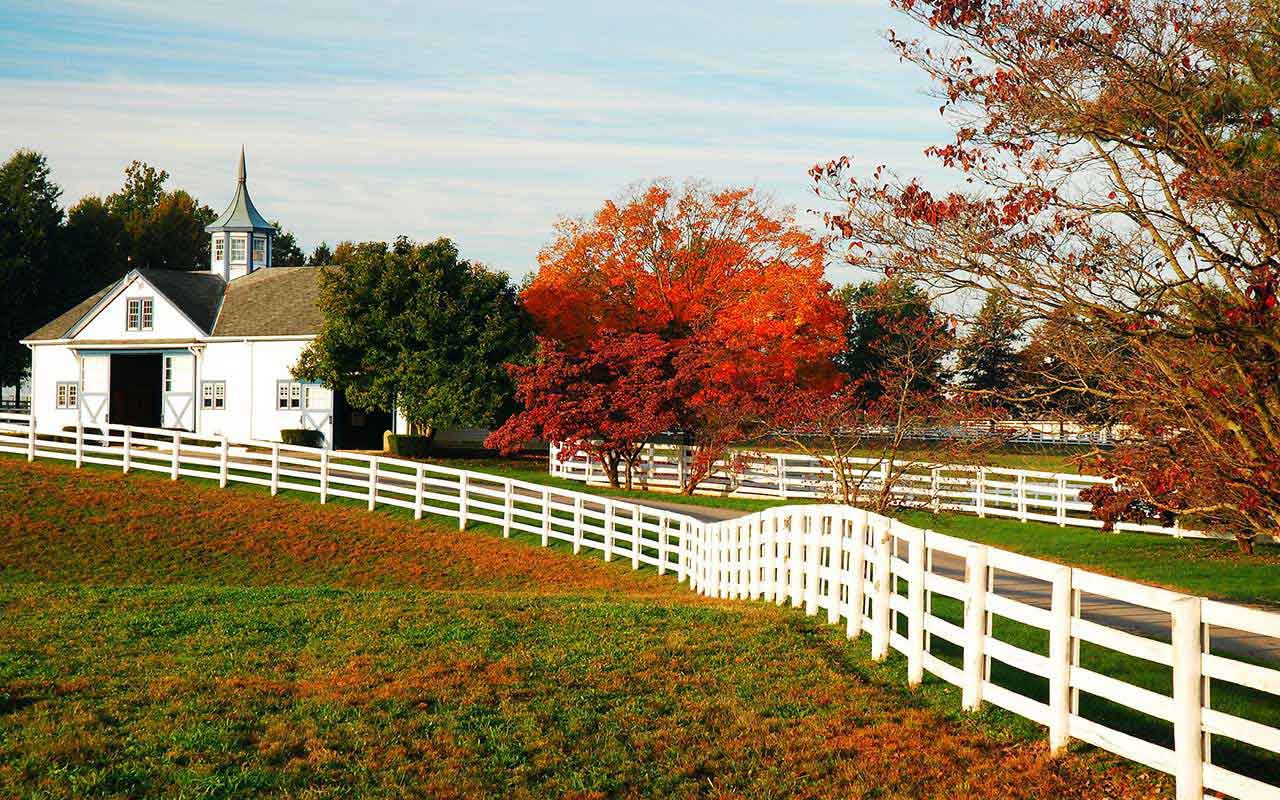
Lexington, Ky.
- City population: 315,109
- Share of population 65+: 12.2%
- Cost of living for retirees: 6.6% below the national average
- Average income for population 65+: $61,323
- Community score: 62.9
- State's tax rating for retirees: Most Tax Friendly
As you'd expect, the Bluegrass State holds plenty of appeal for horse lovers and bourbon aficionados. But retirees can pursue other interests here as well. Lexington has more than 100 parks, five public golf courses and a 734-acre nature preserve with more than 10 miles of hiking trails. For indoor entertainment, check out the numerous galleries and theaters, including the Lexington Opera House and its schedule of ballets, Broadway musicals, comedy shows, operas (of course) and other performances. The University of Kentucky offers the Singletary Center for the Arts, too.
You can also satisfy your academic pursuits at the University of Kentucky. The Osher Lifelong Learning Institute offers various courses, forums, interest groups, trips and events to people age 50 or older; annual membership costs $35. The Donovan Fellowship allows Kentucky residents age 65 and older to take university classes free, space permitting.

Lafayette, La.
- City population: 126,476
- Share of population 65+: 13.1%
- Cost of living for retirees: 8.3% below the national average
- Average income for population 65+: $64,729
- Community score: 62.4
- State's tax rating for retirees: Tax Friendly
Laissez les bons temps rouler. That's Cajun French for "let the good times roll" and a phrase you ought to learn—and live by—when retiring to Lafayette. Known as the "Cajun Capital City," it's rich in history, distinctive foods, two-stepping tunes and, of course, Cajun and Creole culture. Nature lovers have plenty to appreciate in the area, too. Located on the Mississippi Flyway and the Atchafalaya Loop of America's Wetland Birding Trail, Lafayette offers an abundance of wildlife to observe, as well as plenty of rivers, swamps and bayous for paddling, fishing and exploring.
Plus, it's more affordable than the more (in)famous Louisiana city of New Orleans, which is about 130 miles east of Lafayette and comes with living costs 1% above the national average for retirees. So if you're hoping for a retirement that's like one long Mardi Gras celebration, and you want help your budget stretch as long as the party keeps rolling, Lafayette is the place for you.
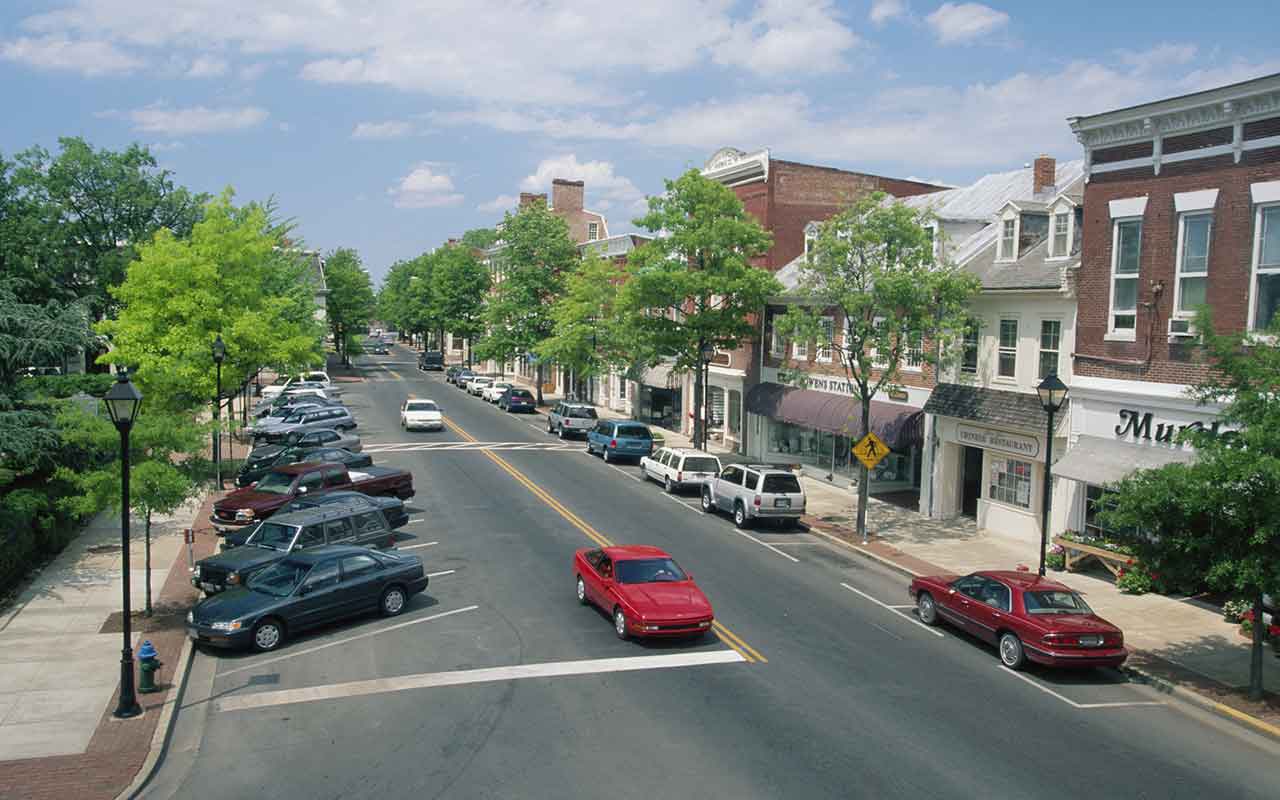
Easton, Md.
- City population: 16,606
- Share of population 65+: 23.5%
- Cost of living for retirees: n/a
- Average income for population 65+: n/a
- Community score: n/a
- State's tax rating for retirees: Least Tax Friendly
On the eastern shore of the Chesapeake Bay, this small town is packed with history, charm and senior residents. You can find a surprising number of eclectic dining options in town, as well as an array of boutique shops, art galleries and other cultural attractions. In fact, in July 2019, Easton was named one of two new Arts and Entertainment Districts in Maryland, joining the 26 existing Districts in the state in offering tax incentives to local artists and creative businesses. Qualifying developers and organizations will get a property tax abatement for artistic-related improvements to their buildings, and local artists can score a state income tax deduction for all art created and sold within the 110-acre district.
And you could use the extra opportunity to save. Maryland is, by and large, a wealthy area, home to a great number of millionaires, and the living costs reflect that. The cost of living for all residents in Easton are 13.8% above the national average, according to Sperling's BestPlaces, which makes it at least more affordable than Annapolis, on the opposite shore of the bay, where living costs are 41% above the national average. And water-loving retirees still have access to the same torrent of activities, such as kayaking, canoeing, boating and fishing, common on the Chesapeake Bay. Note though that it typically takes a long drive to cross the Bay, putting most of the popular nearby beaches an hour or two away. Matapeake, on Kent Island, is a nice exception, about 30 miles from Easton. It includes a public swimming beach, as well as a dog beach.

Jackson, Miss.
- City population: 170,393
- Share of population 65+: 11.6%
- Cost of living for retirees: 10% below the national average
- Average income for population 65+: $47,876
- Community score: 57.8
- State's tax rating for retirees: Most Tax Friendly
Low costs and friendly tax policies can make for a sweet retirement in the Magnolia State, and the capital is particularly alluring. Jackson is a surprisingly eclectic city that holds appeal for Civil War buffs, blues music aficionados and even ballet fans. Every four years, dancers from around the world flock to Jackson for the two-week USA International Ballet Competition to compete for medals, scholarships and spots in ballet companies. Similar competitions are held only in Russia, Bulgaria and Finland.
The Milken Institute ranks Jackson eighth among the best large cities for successful aging due to its affordability and an abundance of nurses, nurse practitioners and orthopedic surgeons, as well as caregiving options and geriatric facilities. Note, however, that the area's residents are prone to unhealthy habits that you don’t want to pick up in retirement, including low levels of activity and high levels of fast-food dining.
Quiz: Put Your Retirement IQ to the Test

Durham-Chapel Hill, N.C.
- Metro population: 550,281 (Durham: 257,170)
- Share of population 65+: 13.6% (Durham: 10.8%)
- Cost of living for retirees: 10.5% below the national average
- Average income for population 65+: $63,046 (Durham:$59,567)
- Community score: 64.1
- State's tax rating for retirees: Not Tax Friendly
Duke University and the University of North Carolina may be bitter sports rivals, but their hometowns of Durham and Chapel Hill, respectively, team up to form a powerhouse metro area and a great place to retire. Indeed, the Milken Institute ranks Durham-Chapel Hill as the third best large metro area for successful aging—crediting the area's economic strength, as two-thirds of North Carolina's Research Triangle (the other third being Raleigh), and quality health care. The universities play a big role in those two advantages and also boost up the local cultural and recreational scenes, like in many college towns.
Though not a deal-breaker for every retiree, it’s worth noting that violent crimes are more prevalent in Durham than they are for the nation as a whole. The rate of violent crime is 8.6 per 1,000 residents, according to the Neighborhood Scout, compared with a national median of 4 violent crimes per 1,000 residents. Chapel Hill rates safer, with just 1.8 violent crimes per 1,000 residents. And the real estate values reflect it: The median home value is $382,900 in Chapel Hill and $229,900 in Durham, according to Zillow.

Oklahoma City
- City population: 629,173
- Share of population 65+: 11.9%
- Cost of living for retirees: 13.8% below the national average
- Average income for population 65+: $57,615
- Community score: 60.3
- State's tax rating for retirees: Not Tax Friendly
The biggest city in the Sooner State charges residents little in living costs. Housing-related expenses are particularly affordable, at 28.1% below average for retirees. Indeed, the median home value across all ages is $131,700, well below the nation's median of $229,000, according to Zillow. And a private room in a nursing home costs a median $66,248 a year, compared with a median $100,375 a year for the U.S., according to Genworth.
Cowboys may feel particularly at home in Oklahoma City—it has one of the largest livestock markets in the world, after all—but given the area's downtown revitalization efforts over the past several years, everyone can find something to enjoy. The Bricktown Entertainment District has a variety of restaurants and nightlife options. And in neighboring Norman, the University of Oklahoma plays host to bigtime sporting and cultural events.
QUIZ: True or False? Test Yourself on Social Security Basics

Charleston, S.C.
- City population: 120,903
- Share of population 65+: 12.0%
- Cost of living for retirees: 2.1% above the national average
- Average income for population 65+: $45,574
- Community score: 64.5
- State's tax rating for retirees: Tax Friendly
Southern charm, a rich history, city living and nearby beaches combine to make Charleston a uniquely attractive retirement destination. History buffs, in particular, can appreciate the city's Civil War sites, including Fort Sumter, and well-preserved antebellum architecture. The Preservation Society of Charleston is the oldest community-based historic preservation group in the country.
Foodies, too, can find plenty to enjoy along Charleston’s cobblestone streets, especially in the brunch and comfort food areas. And if you need to work off some of those calories, water sports, including surfing, paddle boarding and kayaking, are popular local activities—along with boating and fishing.

Knoxville, Tenn.
- City population: 184,465
- Share of population 65+: 13.2%
- Cost of living for retirees: 17.1% below the national average
- Average income for population 65+: $46,685
- Community score: 64.2
- State's tax rating for retirees: Tax Friendly
The Volunteer State, which we rank as the fifth-best in the nation for retirement, is a good choice for nest eggs of all sizes. On top of its friendly-tax status, most parts of Tennessee have below-average living costs across the board for retired residents.
Knoxville is particularly affordable for retirees, compared with, say, Nashville, where living costs among retired people are about the same as the national average. Housing costs for retirees in Knoxville are the biggest factor for affordability, at nearly 30% below the national average. Indeed, the city's median home value is just $173,900 versus $262,900 in Nashville and $229,000 throughout the country. No wonder Knoxville is one of the cheapest U.S. cities to live in. Still, being the gateway to the Great Smoky Mountains and home to the University of Tennessee, the city is rich in activities and attractions to fill your retirement years.

Round Rock, Texas
- City population: 116,369
- Share of population 65+: 7.5%
- Cost of living for retirees: 5.9% below the national average
- Average income for population 65+: $72,762
- Community score: 64.2*
- State's tax rating for retirees: Tax Friendly
Nothing weird about retiring to this suburb of Austin. After all, being part of the same metro area, Round Rock gives you easy access to all the same amenities as the capital city, but at a more affordable price. Austin is already relatively cheap, with living costs for retirees 1% below the national average, but its housing costs for retirees are actually 5.8% above the national average. In Round Rock, on the other hand, they're 4.6% below average. Indeed, the median home value in Austin is a pricey $371,900 while in Round Rock, it's just $277,500, according to Zillow. (Both are higher than the national median of $229,000.)
On top of the attractions of nearby Austin, Round Rock has a lot to offer right in town, too. (Good thing because traffic in this metro area can be pretty frustrating, to say the least.) The downtown area hosts a long list of dining options, many of which stay open to lend themselves and their bars to the local nightlife. And developing the local arts and culture scene has been a focus for the city with the introduction of a growing collection of public art and art-centric events such as the Chalk Walk, SculpFest and regular artist workshops.
*Data for the Austin-Round Rock metro area.
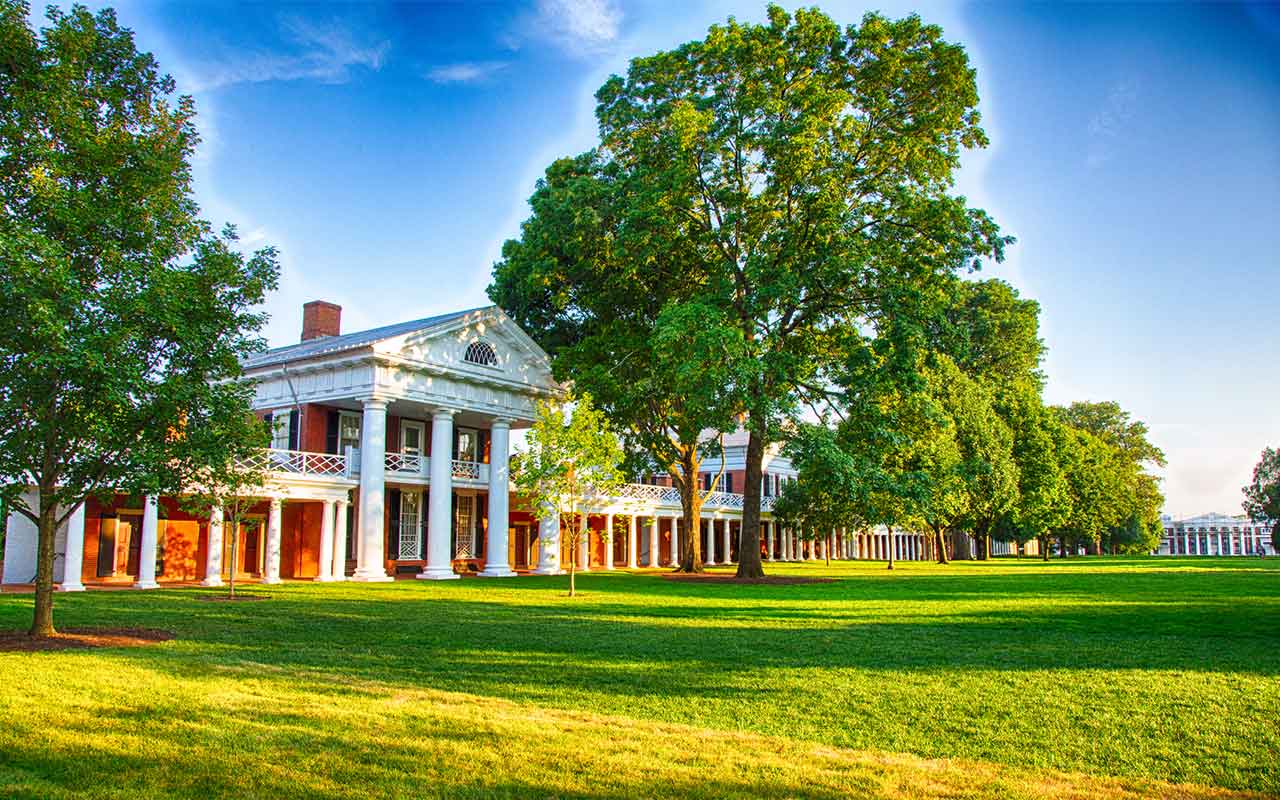
Charlottesville, Va.
- City population: 46,487
- Share of population 65+: 10.4%
- Cost of living for retirees: 0.2% below the national average
- Average income for population 65+: n/a
- Community score: 66.0
- State's tax rating for retirees: Tax Friendly
Renaissance man Thomas Jefferson laid the foundation for the well-rounded city his hometown has become. From his University of Virginia's hollering Hoos to the artists on the downtown promenade, the Charlottesville community is an unexpected blend of Southern charm and liberal edge, a nice choice for a range of retiree personalities. And beyond the college campus and city center, you can find plenty of options for outdoor recreation in the foothills of the Blue Ridge Mountains, including more than 100 miles of of the Appalachian Trail in nearby Shenandoah National Park.
In August 2017, Charlottesville captured national attention when a gathering of white nationalists to protest the removal of a monument to Robert E. Lee turned into a violent rally, injuring dozens of counter-protesters and killing one, Heather Heyer. In general though, the city's violent crime rate is a low 175.4 reported incidents per 100,000 residents, compared with a 297.8 rate for all U.S. cities of similar size, according to the FBI. Charlottesville also ranks fifth for overall well-being, out of all 187 metro areas included in the Gallup-Sharecare Well-Being Index, with above-average scores in all categories, including physical health and resident satisfaction.
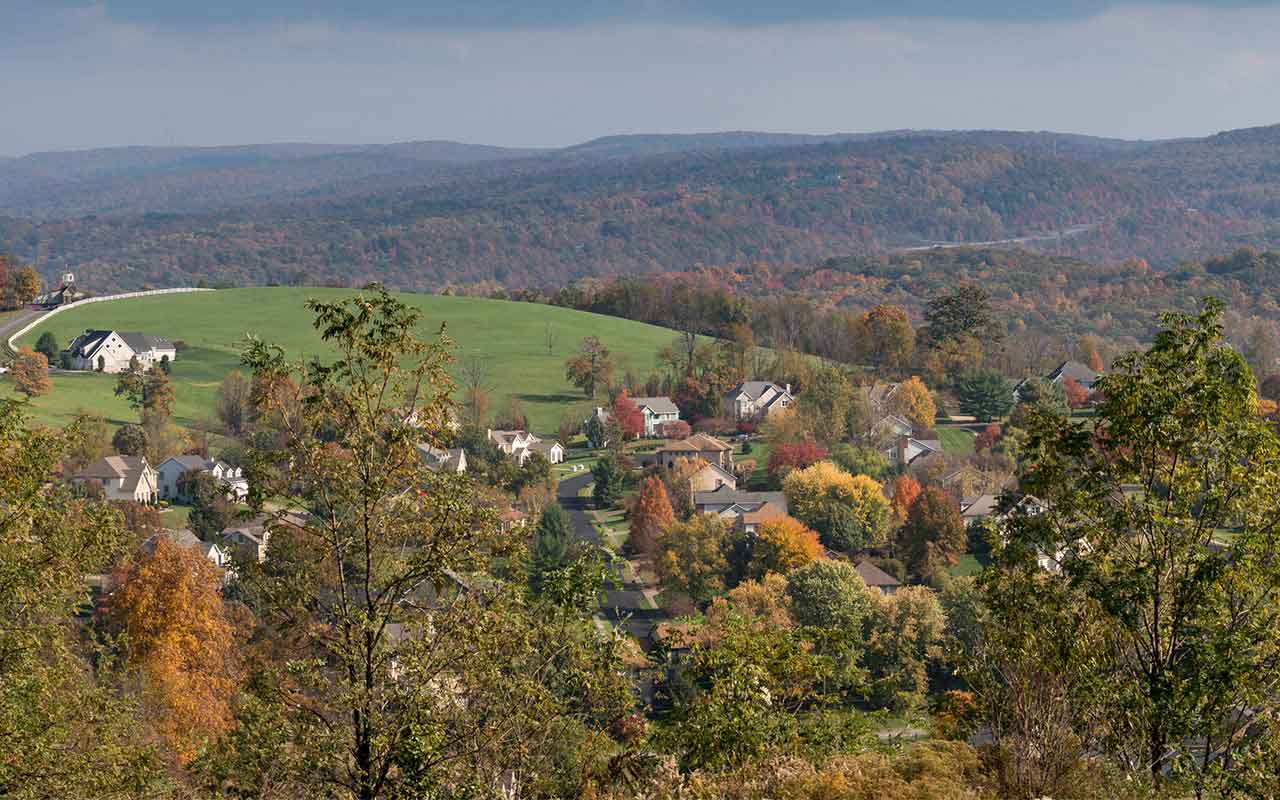
Morgantown, W.V.
- City population: 30,099
- Share of population 65+: 9.4%
- Cost of living for retirees: 7.2% below the national average
- Average income for population 65+: n/a
- Community score: n/a
- State's tax rating for retirees: Not Tax Friendly
West Virginia University offers a number of benefits to older Morgantown residents. If you're age 65 and up, you can take WVU courses, for credit or not, at a discount. Or if you're 50 or older, you can join the local chapter of the Osher Lifelong Learning Institute. A $30 annual membership gets you access to interest groups, trips, social gatherings and program classes, including local and international history, music, computers and yoga.
The University also helps boost local health care services with its many medical facilities, including the Eye Institute, Heart Institute and Ruby Memorial Hospital. The Milken Institute actually credits the area's abundance medical services—including orthopedic surgeons, primary-care clinicians and home-health-care professionals—for contributing to Morgantown's high ranking (18th) among small metro areas.
Beyond the University, you can find a world of outdoor recreation with ample opportunities for hiking, biking, fishing, birding, whitewater rafting and more throughout the hills and valleys of Appalachia.

How We Picked the 50 Best Places to Retire
To pinpoint one great retirement destination in each state, we weighed a number of factors:
- Cost of living for retirees for major metropolitan and micropolitan statistical areas, with data provided by the Council for Community and Economic Research, includes overall costs, housing, food and groceries, transportation, utilities, health care and miscellaneous expenses.
- Household incomes, poverty rates and number of health care facilities are from the U.S. Census Bureau.
- Community well-being and physical well-being scores are provided by digital health company Sharecare, in collaboration with Gallup. These are two of the five elements of well-being that make up the overall Gallup-Sharecare Well-Being Index. (The other three elements are purpose, social and financial well-being.) The index is calculated on a scale of 0 to 100 and based on more than 2.5 million nationally representative surveys. Community well-being is defined as "liking where you live, feeling safe and having pride in your community." Physical well-being is "having good health and enough energy to get things done daily." We display the community score for each place we chose.
- Population data, including the percentage of the population that is age 65 and older, is also provided by the Census Bureau. The figures are highlighted in these rankings for the benefit of readers, but were not factors in our methodology for ranking the best places to retire.
- Taxes on retirees, based on Kiplinger's Retiree Tax Map, which divides states into five categories: Most Tax Friendly, Tax Friendly, Mixed, Not Tax Friendly and Least Tax Friendly. This information is provided for the benefit of readers but was not factored into our selections within each state.
Get Kiplinger Today newsletter — free
Profit and prosper with the best of Kiplinger's advice on investing, taxes, retirement, personal finance and much more. Delivered daily. Enter your email in the box and click Sign Me Up.

Rapacon joined Kiplinger in October 2007 as a reporter with Kiplinger's Personal Finance magazine and became an online editor for Kiplinger.com in June 2010. She previously served as editor of the "Starting Out" column, focusing on personal finance advice for people in their twenties and thirties.
Before joining Kiplinger, Rapacon worked as a senior research associate at b2b publishing house Judy Diamond Associates. She holds a B.A. degree in English from the George Washington University.
-
 Stock Market Today: Trump Retreats, Markets Rejoice
Stock Market Today: Trump Retreats, Markets RejoiceStocks rally, yields soften, the dollar rises, and even beaten-down names enjoy the wages of potential trade peace.
By David Dittman
-
 In Trump’s Economy Should 401(k) Savers 'Set It and Forget It?'
In Trump’s Economy Should 401(k) Savers 'Set It and Forget It?'It’s hard to bury your head in the sand when the markets are volatile. Here’s when it makes sense and when it doesn’t.
By Donna Fuscaldo
-
 What to Do With Your Tax Refund: 6 Ways to Bring Growth
What to Do With Your Tax Refund: 6 Ways to Bring GrowthUse your 2024 tax refund to boost short-term or long-term financial goals by putting it in one of these six places.
By Rachael Green
-
 What Does Medicare Not Cover? Eight Things You Should Know
What Does Medicare Not Cover? Eight Things You Should KnowHealthy Living on a Budget Medicare Part A and Part B leave gaps in your healthcare coverage. But Medicare Advantage has problems, too.
By Donna LeValley
-
 12 Great Places to Retire in the Midwest
12 Great Places to Retire in the MidwestPlaces to live Here are our retirement picks in the 12 midwestern states.
By Stacy Rapacon
-
 10 Cheapest Small Towns to Live In
10 Cheapest Small Towns to Live InThe cheapest small towns might not be for everyone, but their charms can make them the best places to live for plenty of folks.
By Dan Burrows
-
 15 Reasons You'll Regret an RV in Retirement
15 Reasons You'll Regret an RV in RetirementMaking Your Money Last Here's why you might regret an RV in retirement. RV-savvy retirees talk about the downsides of spending retirement in a motorhome, travel trailer, fifth wheel or other recreational vehicle.
By Bob Niedt
-
 The Cheapest Places To Retire in the US
The Cheapest Places To Retire in the USWhen you're trying to balance a fixed income with an enjoyable retirement, cost of living is a crucial factor to consider.
By Stacy Rapacon
-
 The Six Best Places to Retire in New England
The Six Best Places to Retire in New Englandplaces to live Thinking about a move to New England for retirement? Here are the best places to land for quality of life, affordability and other criteria.
By Stacy Rapacon
-
 13 Smart Estate Planning Moves
13 Smart Estate Planning Movesretirement Follow this estate planning checklist for you (and your heirs) to hold on to more of your hard-earned money.
By Janet Kidd Stewart
